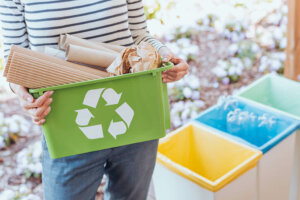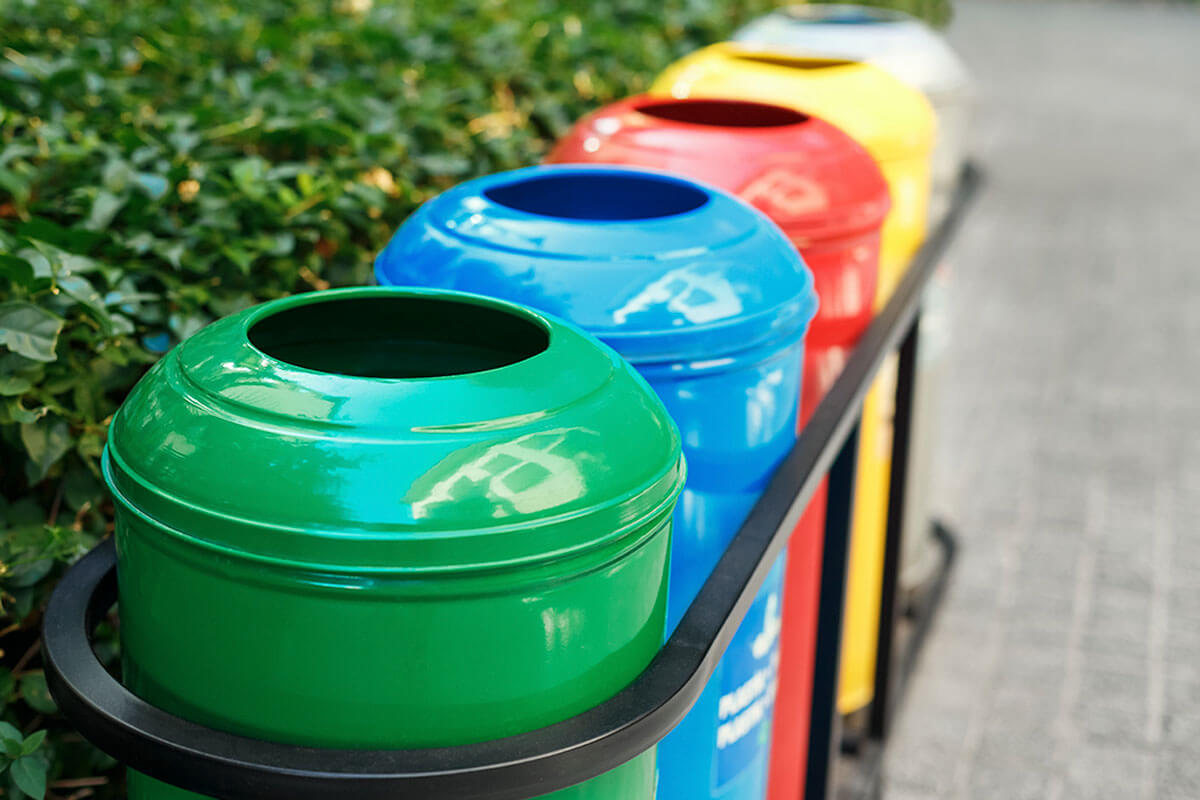Recycle At Home: Learn How To Do It

To recycle at home is to take care of the planet. Each year, more than 2.1 billion tonnes of waste is produced worldwide, as revealed in a 2019 report by the British organization Verisk Maplecroft. Of that amount, only 16 percent (323 million tons) is recycled.
For this reason, it’s urgent to learn how to recycle our waste well at home. So take note because we’ll tell you what waste you can and can’t recycle and in which container each waste should go.
Giving some waste such as plastic a second chance, in addition to avoiding further contamination, supports the circular economy. This is when, after the last phase of its useful life, a transformation takes place to obtain a new product. For example, garments can be made with Polyethylene Terephthalate or PET bottles.
Recycle at home: recognize usable waste

When you start recycling at home, it’s normal to feel confused about what works or doesn’t work. Here’s a list of some of the most common reusable products:
- Plastic containers for shampoo, yogurt, soda, or water.
- Snack bags, yogurt, and soda container lids, as well as plastic caps.
- Aluminum cans of beer, corn, or other canned goods.
- Milk or juice boxes, as well as paper and cardboard containers such as cereal and shoe boxes.
- Glass bottles of wine, soft drinks, jams, and other preserves.
- Newspapers, notebooks, and magazines.
- Used oil and other organic waste.
- Electronic devices, household appliances, batteries, and light bulbs.
There’s a container for each item

Recycling at home will be of no use if we don’t learn to differentiate the containers where each waste item should go.
Yellow container
In the yellow container, you should discard plastic containers and bottles such as detergent, shampoo, soda, and gel. Also the caps and stoppers of said bottles, the bags of the snacks and appetizers, the cans, the aluminum trays, the butter tubs, and the plastic bags.
No bottles, pacifiers, plastic toys, or kitchen utensils such as the spatula should go in this container.
Blue container
In the blue container, you should put magazines, newspapers, shoe boxes, cereal boxes, notebooks, and other clean paper and cardboard waste. That’s why you shouldn’t put kitchen napkins, dirty papers, or diapers in there.
Green container
In the green container, you should put glass bottles and glass jars. However, glass debris from light bulbs, mirrors, ashtrays, glasses, or crockery shouldn’t go in there.
Brown or gray container
In this container, you must put organic waste from food such as coffee grounds, fish bones, chicken remains, and others that remain after meals. Also, plant remains and products of the pruning and maintenance of the gardens.
Other containers
Cells, batteries, and electronic waste have specific containers, located in some areas of the city or shopping centers. You can also identify the clean points or contact companies that take care of the home collection.
Recycle at home: basic tips

Before completing the recycling process, it’s important that you take into account other tips to facilitate the processes that follow after leaving each waste item in its container:
- Read the labels well: when in doubt, check the labels, as some indicate the corresponding container.
- Clean the containers well: both glass, plastic, and tin must be left clean in the corresponding containers.
- Optimize space: reduce the size of bottles and cans, after cleaning, flatten them.
- Share the plan with your family: tell the whole family about your plan, so there’ll be no mistakes when recycling that will harm the whole process.
Recycle at home: start now!
Recycling at home is easier than it seems, choose bags of the same colors from the containers to make the separation easier. What you no longer want, but don’t want to throw away, you can reuse it. This is certainly the case for clothes and toys, which you can donate or sell.